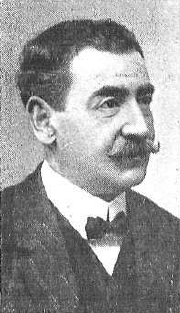Salvador Viniegra facts for kids
Quick facts for kids
Salvador Viniegra
|
|
|---|---|

Salvador Viniegra
|
|
| Born | November 23, 1862 Cadiz, Spain
|
| Died | April 29, 1915 Madrid, Spain
|
| Nationality | Spanish |
| Education | School of Fine Arts, Cadiz |
| Known for | Painter; Deputy Director, Prado Museum |
| Movement | Orientalist |
Salvador Viniegra y Lasso de la Vega (born November 23, 1862 – died April 29, 1915) was a Spanish artist. He was known for painting historical scenes and for supporting other artists.
Contents
Who Was Salvador Viniegra?
Salvador Viniegra was a talented painter from Cádiz, Spain. He lived during a time when art was changing a lot. Besides being a painter, he also helped many other artists, especially musicians, to succeed.
Early Life and Art Studies
Salvador Viniegra was born in Cádiz. He first started studying law, but he soon realized his true passion was painting. He then joined the Escuela de Bellas Artes de Cádiz, which is the School of Fine Arts in Cadiz. There, he learned from teachers like Rámon Rodríguez Barcaza and José Pérez Jiménez.
He began his art journey by focusing on watercolors. He created a group of watercolor paintings that became an album. This collection brought him his first public success in 1877. In the years that followed, he won several art prizes at local art shows. He also traveled to Rome to study how to draw people.
Gaining Recognition
When he returned to Spain in 1882, he entered a competition called the Exposición de Hernandéz. He submitted a painting titled Un patio de Sevilla. Later, in 1887, another very large painting of his, La bendición de los campos en 1800, was shown at the Exposición Nacional de Madrid. This painting won the first prize in its category.
Time in Rome and Famous Works
In 1890, Salvador Viniegra won a special scholarship. This allowed him to study at the Academia Española de Bellas Artes in Rome. He lived there until November 1896. This time in Italy was very important for his art. He created many of his best paintings during these years.
His artworks were shown in cities like Munich, Rome, and Budapest. They were copied and shared a lot, making him one of the most popular painters in Europe. In 1897, his painting La romería del Rocío was shown in the Sala Dante de Roma and at the Exposición Nacional de Bellas Artes de Madrid. It also appeared at big international exhibitions in Munich and Vienna in 1898, where it won several gold medals. An art dealer from Poland then showed the painting in different cities in Eastern Europe. Finally, in 1905, Viniegra gave this painting to the Museo de Arte Moderno in Madrid.
Supporting Other Artists
After his time in Rome, Salvador Viniegra settled in Madrid. In 1898, he became the assistant director and art caretaker of the famous Prado museum in the city. During this period, he became a very important supporter of the arts.
He was also a good cello player himself. Because of this, he especially helped musicians. Some of the artists he supported include the composer Manuel de Falla and the cellist and conductor Juan Ruiz Casaux. Salvador Viniegra passed away in Madrid.
See also
 In Spanish: Salvador Viniegra para niños
In Spanish: Salvador Viniegra para niños


